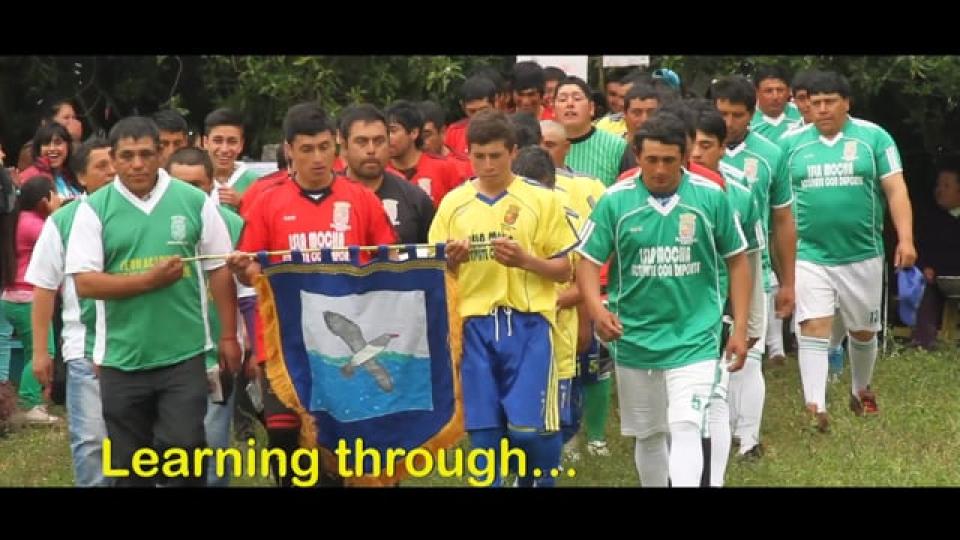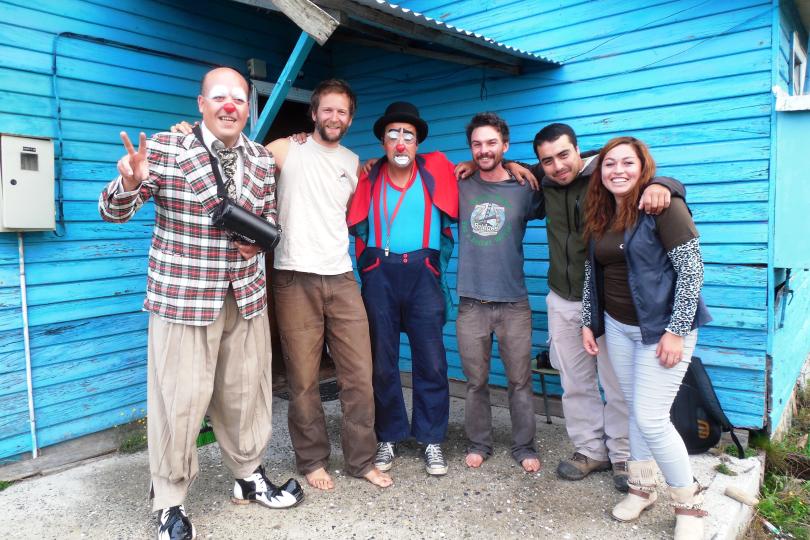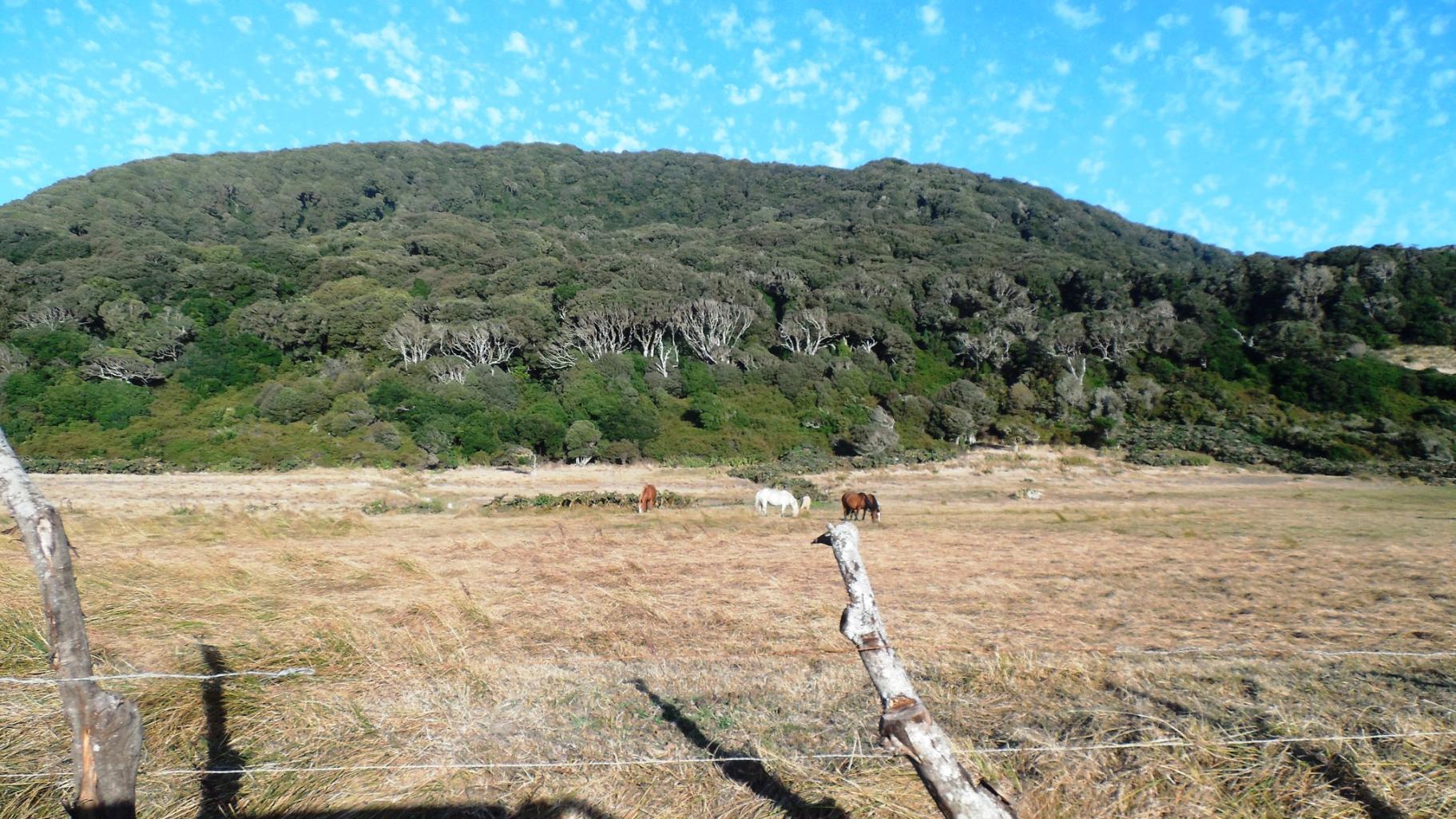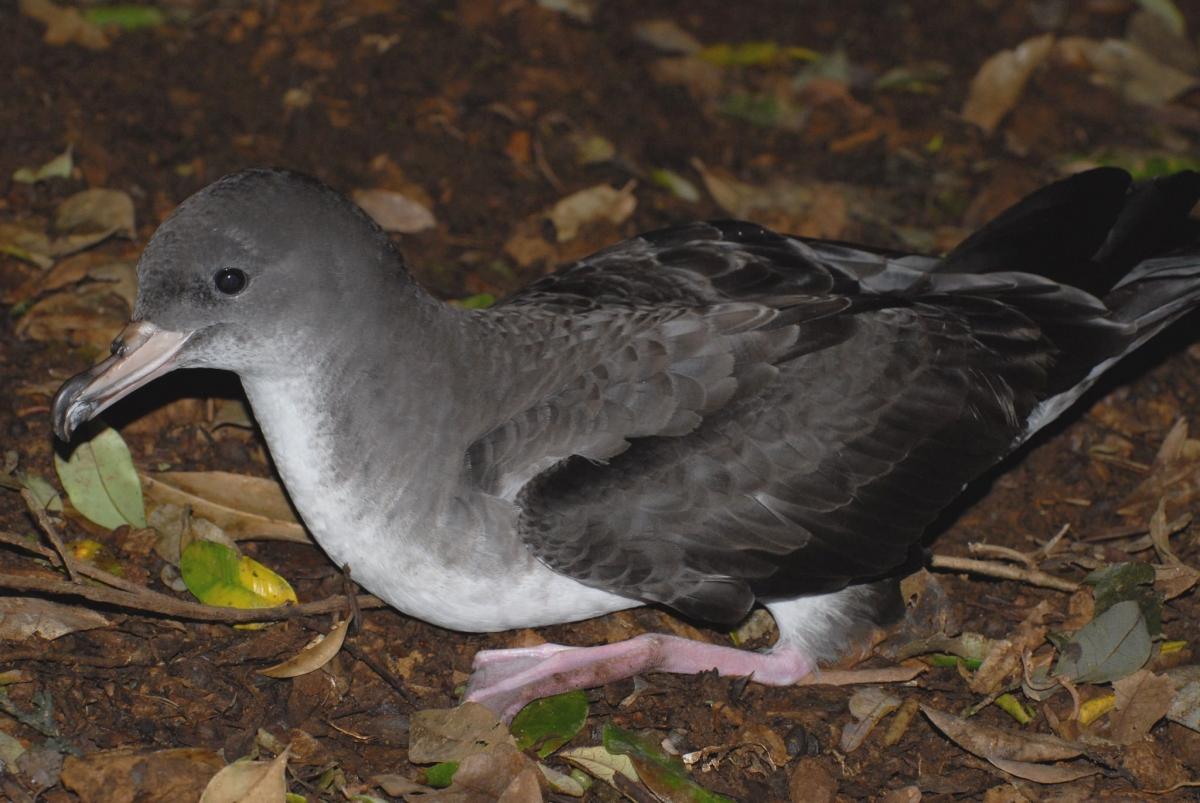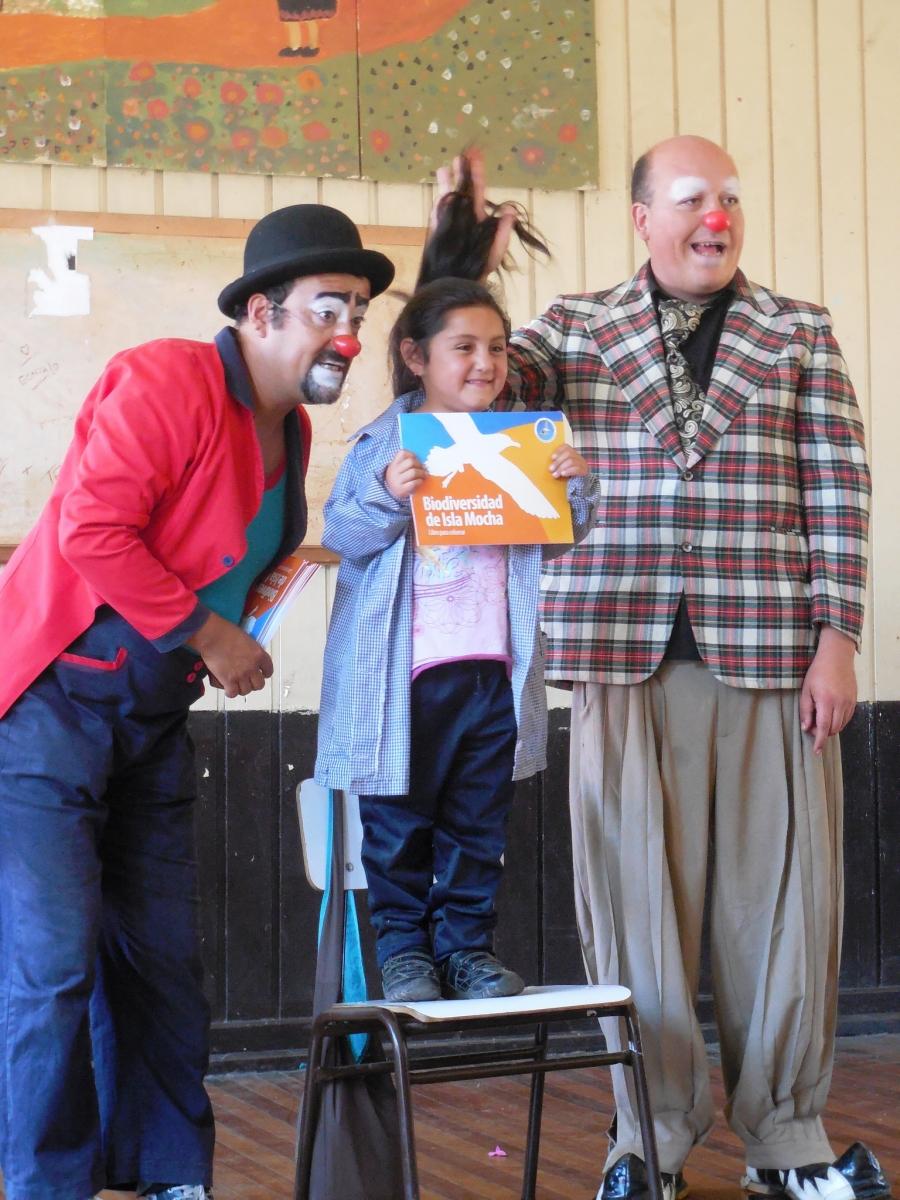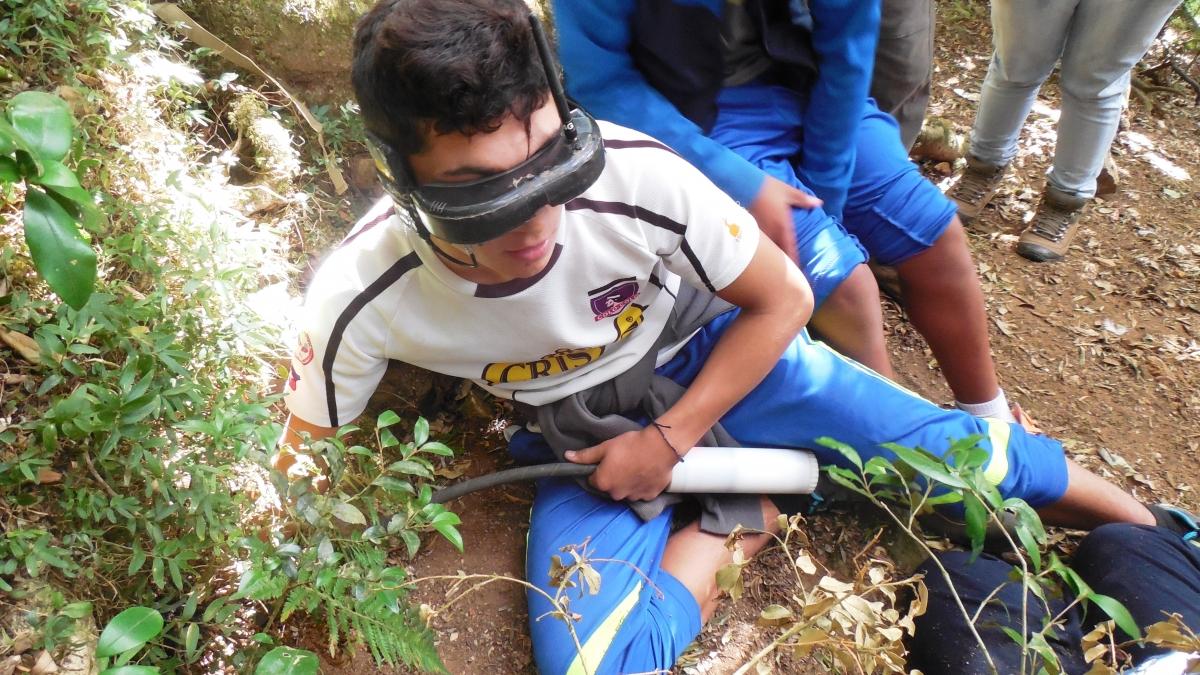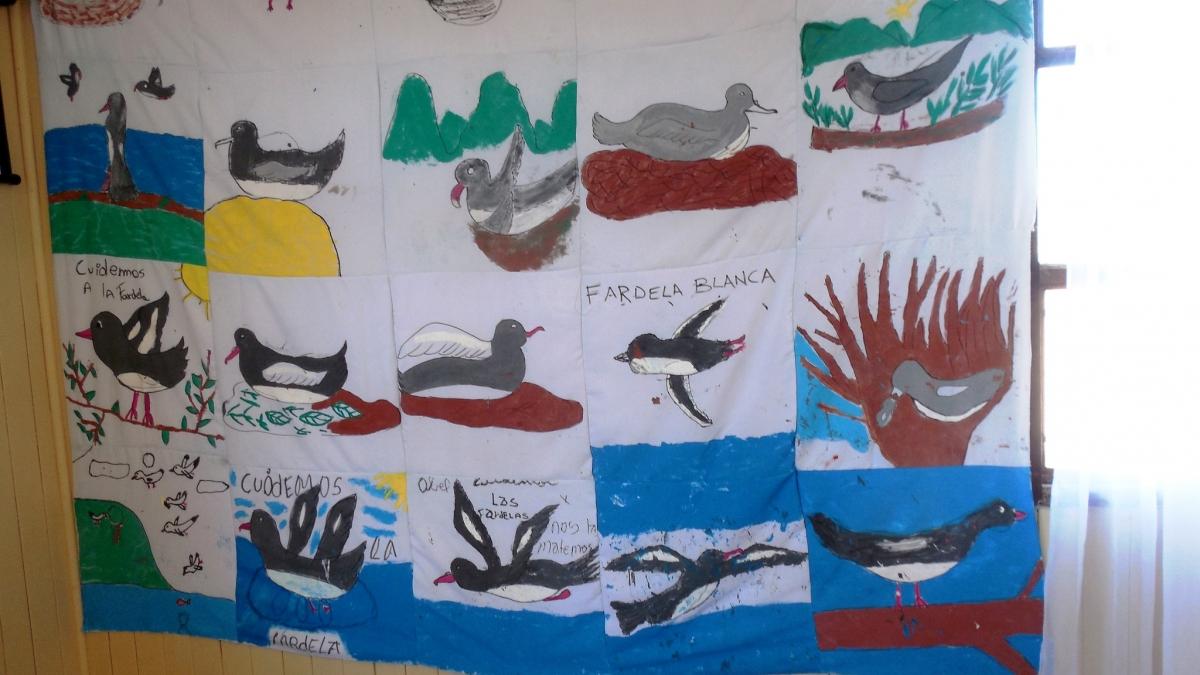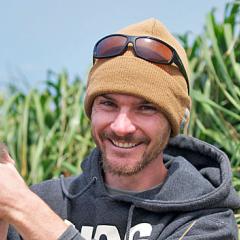Engaging communities to save threatened seabirds
By Ryan Carle
In the southern Pacific Ocean, off south-central Chile, is a wind-swept island with a mountain blanketed in old-growth forest. This mountain is inhabited by 70% of the world’s Pink-footed Shearwaters, a globally threatened seabird related to albatrosses. The island is called Isla Mocha (pronounced with a hard “ch”: Mo-cha), and is also home to around 600 Mochanos—residents who live in the plains below the mountain, harvesting shellfish and seaweed, grazing cattle and sheep, and fishing in the ferocious currents that roil around the island.
At dusk, walk up the steep mountain, to the very top, where gigantic trees meet steep cliffs along the edges of the peaks, and wait. As darkness falls you will suddenly hear one crashing sound, then another. All around you, gull-sized birds plummet from the skies through the thick forest canopy and crash gracelessly on the ground. The Pink-footed Shearwaters regroup themselves and run into the underground burrows where they nest beneath the root-systems of the giant trees. They sing bizarre sounds that make the forest sound enchanted: wha-whaaaaaa wha-whaaaa, like the sound of dozens of crying babies. At the end of each nesting burrow, a single chick is eagerly awaiting a regurgitated meal of sardine slurry.
In the whole world, about 40,000 Pink-footed Shearwaters inhabit just three islands, all in Chile, and the vast majority breed on Isla Mocha. They migrate tens of thousands of miles each year from Chile to the United States, to visit the productive feeding grounds of the California Current. One of their biggest threats is being accidentally killed in coastal fishing operations as they pass through the waters of half a dozen different nations. Mortality from fisheries bycatch usually occurs when birds drown after bring caught on hooks or entangled in nets. Other threats are introduced animals (such as pigs, rabbits, and cattle) that cause extreme habitat destruction on breeding islands, or animals like rats and cats that directly kill the birds.
On Isla Mocha, there is an additional threat: some residents eat the Pink-footed Shearwater chicks. The harvest began relatively recently, when the island was colonized in the 1930s. Unlike some traditional seabird hunting practices, such as those in New Zealand and Arctic communities, on Mocha it has never been managed cooperatively taking into account the sustainability of the shearwater population. Chick harvest has been illegal since the designation of Isla Mocha as a National Reserve in 1988, and in 2005 the Pink-footed Shearwater was designated” Endangered” in Chile.
To save the Pink-footed Shearwaters, it will be necessary to reduced mortality from fisheries bycatch, control feral cats and dogs, keep other non-native predators from being introduced, and halt illegal chick-harvest by humans. This presents a difficult conservation problem—human social dynamics on the island are a crucial factor to the survival of the shearwaters. The people that are accidentally catching shearwaters on fishing hooks, or subsidizing feral animals, or harvesting the chicks, must ultimately be the same people who help save the Pink-footed Shearwater from extinction. It is their island, their community, their Pink-footed Shearwater.
I began working with the people and birds of Isla Mocha in 2014, when I was awarded a Switzer Leadership Development Grant to work with the non-profit organization Oikonos Ecosystem Knowledge (www.oikonos.org) on seabird conservation in Chile. Oikonos has worked on Isla Mocha since 2009. From the get-go, we felt that the most important thing that could be done for Pink-footed Shearwaters was education and empowerment of the community.
However, forcing outside values on a community is a recipe for disaster. At best, your conservation goals will fail, at worst, you may anger the community, perhaps causing more damage to the environment in the process. Oikonos thought long and hard about this problem, and partnering with the Chilean National Park Service (CONAF), drew on experiences of other projects to create a program that empowers, rather than alienates the community.
Some of the principles are:
Empower residents
The community on Isla Mocha is small. Everyone knows everyone. Oikonos’ local coordinator Tiare Varela is a Mochano. She studies the biology of the shearwaters, teaches the local students, and works closely with the government agency that protects the forest, CONAF. Now she is one of the most effective people in the world at conserving shearwaters, by being a respected voice advocating for the survival of Pink-footed Shearwaters and their habitat in her community.
Laughter and fun are a common ground
An unlikely duo at the forefront of Pink-footed Shearwater conservation are Miguel and Gonzalo the clowns. They step off a tiny 4-seater plane on the Mocha airstrip. Miguel is gigantic. Gonzalo is dapper. These professional actors have worked on Mocha for years, forming a tight relationship with the community. Conservation messages about responsible pet-management, conservation of the unique old-growth forest of Mocha, and chick harvest are interspersed with liberal amounts of joking and laughter. They make up Mocha- and shearwater- specific lyrics to popular tunes and sing them over the 2-way radios the community uses to communicate. They ride around the island in a horse-drawn cart, going door to door spreading laughter and stories about Pink-footed Shearwaters. The kids chase them down the street, screaming in delight. They are the perfect messengers for conservation.
Every spring, Miguel and Gonzalo help preside over another fun event: the Fardela Cup soccer match (in Spanish, the Pink-footed Shearwater is called Fardela Blanca). As you might imagine, soccer is huge on Isla Mocha, and each year a special event is held to celebrate the return of the Pink-footed Shearwater to the island—the animal that makes Mocha so unique.
Education is key
The most important part of the Mocha program is environmental education. Although the residents share the island with thousands of Pink-footed Shearwaters, many people there know little about the birds and why they are special. Our program works with students and adults alike to spread information about their native shearwaters. In 2014, I visited a nesting colony with an Oikonos sponsored middle school class called the Grupo Ecologico (Ecological Group), and checked shearwater nests for chicks with the students. We used a special infra-red burrow camera to peer in at the fuzzy chick at the end of the long burrow. We also looked at tracks of shearwater foraging trips that I had been collecting that week (during an exhausting series of all-nighters in the forest) from birds tagged with small GPS units. The birds had traveled hundreds of miles out and back to gather food for their chicks. These were the first-ever data on where the birds go to forage at sea, and, appropriately, the Mochan school kids were the first people to get to see them.
Long-term commitment to the community
Long-term commitment is crucial to implementing community-based conservation. Oikonos continues to work year after year with the community, including helping them improve their quality of life in ways that benefit both people and their environment. For example, we are working with the local government on creating sustainable trash and recycling systems for the island (there is currently no trash system!), offer free spaying and neutering for pets, and are talking with the local community about proposals to protect artisanal fisheries from the island from competition with industrial fishing fleets. The trust developed over many years between the Mochan community and Oikonos is critical to conservation success.
I feel lucky to work with Pink-footed Shearwaters and the community of Isla Mocha, work that was made possible by the Switzer Foundation grant. The last two years, I spent many nights in the forest with local park rangers, high school students, and community residents, working on tagging the nocturnal shearwaters with small GPS units. At around 4 AM, those birds that crashed through the forest canopy at dusk have fed their chicks, and each night we would watch them emerge from their nest burrows. The birds, built for long-distance travel at sea, are ungainly in the forest. They shuffle over to the massive trees overhanging the cliffs. We hear the scratching of sharp toenails, as they creep up the tall trunks. When they are clear of branches, and can see moonlight reflecting off the sea, they spread their long wings and jump off, silently disappearing into the night.
